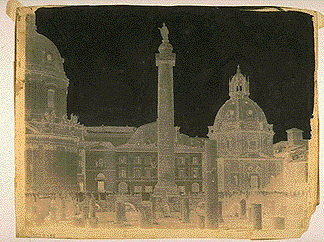1841: Talbot patents the Calotype process

Calotype negative by John Shaw Smith
The Calotype, or 'Talbotype', was a refinement of the process of photogenic drawing, offering a much more sensitive medium through its use of the latent image phenomenon. It was invented by Fox Talbot in September 1840 and patented on the 8th of February 1841. While it was never remotely competitive in the commercial sphere (although Talbot and Nicolaas Henneman (1813-1898) used it as the basis of their photographic business at Reading), it was offered as the chief alternative to the Daguerreotype and was more attractive to amateurs, artists, and scientists, who adopted it widely. In France too it was taken up with enthusiasm: the pioneer photographer Hippolyte Bayard (1801-1887) preferred it to his own inventions and Louis-Désiré Blanquart-Evrard (1802-1872) adopted it in 1844, beginning experiments with the calotype process that would lead to the development of albumen paper prints by 1850.
With the exception perhaps of the waxed paper process, which was invented in 1851 by Gustave Le Gray (1820-1882) and extended the life of paper negatives in the 1870s, the first generation processes - the Daguerreotype, Photogenic Drawing and Calotype - were all extinct by the end of the 1850s, having given way to their own offspring: the wet collodion glass negative and the albumen print.
.